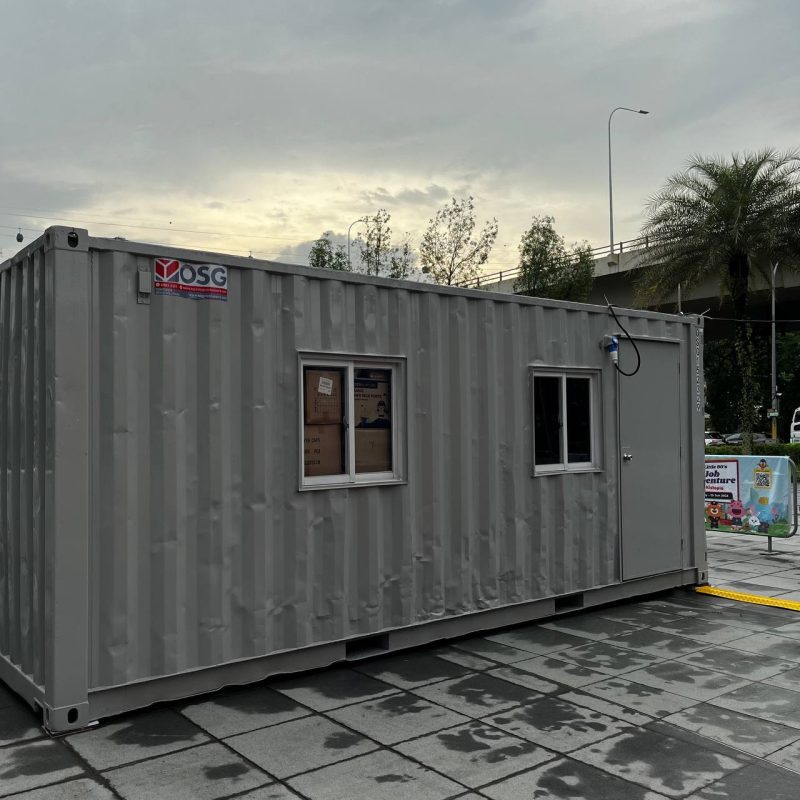The Cost of Shipping Containers: What You Need to Know Before You Buy

Shipping containers have become increasingly popular for various applications, from homes and offices to storage solutions and even pop-up shops. They offer a durable, modular, and often cost-effective alternative to traditional structures. However, before diving into the world of shipping container purchasing, it’s crucial to understand the costs associated with them. Here’s what you need to know before making your purchase.
1. Initial Purchase Cost
The price of a shipping container can vary significantly depending on its size, condition, and type. Standard shipping containers come in sizes such as 20 feet and 40 feet, and prices generally range from $2,000 to $6,000 for a used container, with new containers costing between $3,000 and $8,000. High-cube containers, which offer extra height, and specialized containers, like refrigerated ones, can cost more.
Factors Affecting Initial Cost:
- Condition: New containers cost more than used ones. A used container might cost less, but its condition could vary, so you need to inspect it thoroughly or buy from a reputable dealer.
- Size: Larger containers are more expensive. For instance, a 40-foot container will typically cost more than a 20-foot container.
- Type: Specialized containers, such as those for refrigerated goods, will be significantly more expensive than standard dry containers.
2. Delivery and Setup Costs
Once you’ve purchased your container, you need to consider the cost of delivery and setup. Shipping containers are heavy and require specialized equipment for transport. Delivery costs can range from $500 to $2,000, depending on the distance from the seller, the size of the container, and accessibility to the delivery site.
Additional Considerations:
- Site Preparation: You may need to prepare the site where the container will be placed, which can include leveling the ground, laying a foundation, or installing utilities. Site preparation can add several hundred to a few thousand dollars to your total cost.
- Craning or Lifting: If your delivery site is difficult to access, you might need a crane or other lifting equipment to place the container in position. This can add another $500 to $1,500 to the cost.
3. Modification Costs
While a shipping container provides a solid base, it often requires modifications to suit your needs. Converting a shipping container into a livable or usable space involves cutting windows and doors, insulation, electrical wiring, and plumbing.
Typical Modification Costs:
- Basic Modifications: Adding windows, doors, and insulation can cost anywhere from $1,000 to $5,000, depending on the complexity of the work.
- Full Conversions: For more extensive conversions, such as turning a container into a home or office, costs can range from $10,000 to $50,000 or more. This includes interior finishes, electrical and plumbing systems, and additional structural reinforcements.
4. Ongoing Maintenance Costs
Shipping containers are designed to be durable, but they still require maintenance to ensure longevity. Regular maintenance includes checking for rust, ensuring that seals are intact, and addressing any structural issues that may arise.
Estimated Maintenance Costs:
- Rust Treatment: Rust can be a concern, particularly in humid or coastal areas. Treating and repainting a container can cost between $500 and $1,500.
- Repairs: Minor repairs might be needed over time, such as fixing leaks or replacing seals. Budgeting $200 to $500 annually for maintenance is a good rule of thumb.
5. Insurance Costs
If you’re using your shipping container for commercial purposes or as a primary residence, insurance is another cost to consider. Container insurance can protect against damages, theft, and other unforeseen events.
Insurance Costs:
- Basic Coverage: For basic coverage, expect to pay between $200 and $600 annually.
- Comprehensive Coverage: If you need more extensive coverage, including liability and property protection, costs can range from $500 to $1,200 per year.
6. Resale Value
Shipping containers have a relatively good resale value, particularly if they are well-maintained and in good condition. However, the resale value will be affected by the container’s age, condition, and modifications made.
Resale Considerations:
- Condition: A well-maintained container will fetch a higher resale price.
- Market Demand: The resale value can fluctuate based on market demand and regional trends.
Conclusion
Purchasing a shipping container involves more than just the initial price tag. You need to factor in delivery and setup costs, modifications, ongoing maintenance, insurance, and potential resale value. By understanding these elements, you can make an informed decision and ensure that your investment in a shipping container meets your needs and budget effectively.

